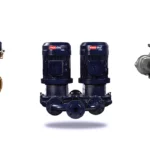Яка особливість гвинтових насосів? Для яких рідин застосовуються? Який принцип дії? Та де цей тип насосів використовують?
Сьогодні особливу увагу приділимо гвинтовим насосам. Міцна конструкція, модульний дизайн та розширена конфігурація цих насосів підвищують гнучкість процесу та надійність експлуатації.
Гвинтові насоси застосовують для перекачування в’язких рідин. Вони продуктивні та забезпечують високий тиск. У цій статті ми поговоримо про їх принцип дії, розглянемо сильні сторони, розповімо про те, де цей тип насосів застосовується.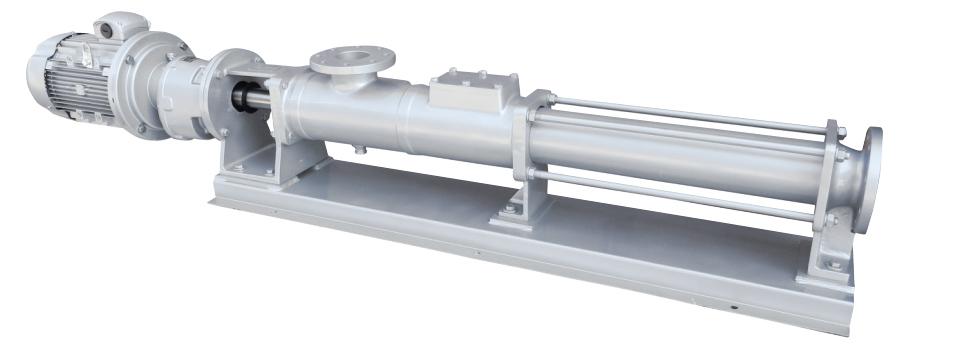
Гвинтові насоси є об’ємними насосами. Вони відносяться до різновиду роторно-зубчастих і умовно поділяються на одногвинтові та багатогвинтові. Багатогвинтовий насос – це насос, в якому основний провідний гвинт (ротор) має спіральне зчеплення з одним або декількома гвинтами. При обертанні провідного гвинта ведені гвинти також починають обертатися. Багатогвинтові насоси мають великий коефіцієнт корисної дії і можливість створення більш високого тиску на виході. У цій статті ми розглянемо принцип роботи та конструкцію насосів, які найчастіше використовуються на промислових виробництвах – одногвинтових.
Одногвинтові насоси умовно можна розділити на насоси високої продуктивності(для перекачування великих об’ємів продукту) та шнекових насосів(для бочок, «єврокубів» та іншої мобільної тари).
Перші мають масивну конструкцію і призначені для перекачування великого об’єму рідини, при цьому не занурюючи жодну зі своїх частин в ємність. Другі, навпаки, мають у своїй конструкції занурювальну частину такого діаметру, яку можна встановити в заливний отвір бочки. Тим не менш, дані насоси мають схожу конструкцію, є самовсмоктуючими і здатні перекачувати в’язкі рідини.
Розглянемо конструкцію та принцип дії гвинтового насоса. Будь-який гвинтовий насос умовно можна поділити на дві частини. Перша частина надає руху робочий орган насоса, і, змушуючи тим самим насос перекачувати рідину. До неї входить двигун та редуктор. Друга – механічна частина насоса, завдяки якій відбувається перекачування рідини з певною продуктивністю і напором.
Механічна частина
Основними складовими механічної частини гвинтового насоса можна вважати ротор (1), статор (2), вхід/вихід насоса з різьбовим з’єднанням (3), корпус підшипників (4), механічне ущільнення (5) та карданне з’єднання (6). Всі ці деталі послідовно з’єднані один з одним і знаходяться усередині спеціальних опор (7).
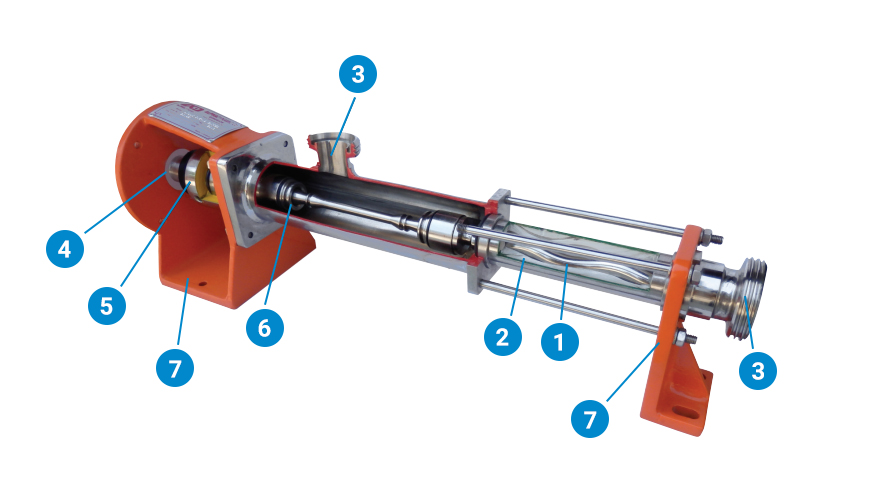
Принцип роботи насосу
Насос підключений до електричного кола або пневматичної лінії. При включенні насоса вал електродвигуна починає обертання з певною кількістю обертів за хвилину. Обертання валу електродвигуна через муфтове з’єднання передається на вал редуктора. Зубчасті колеса редуктора, що знаходяться в послідовному зачепленні, знижують кількість обертів на виході з редуктора і збільшують момент, що крутить. Через перехідний вал, що знаходиться в підшипниковому вузлі, кутова швидкість мотор-редуктора передається на карданний вал або шнек транспортування, який у свою чергу через шарнірне з’єднання приводить в рух ротор насоса.
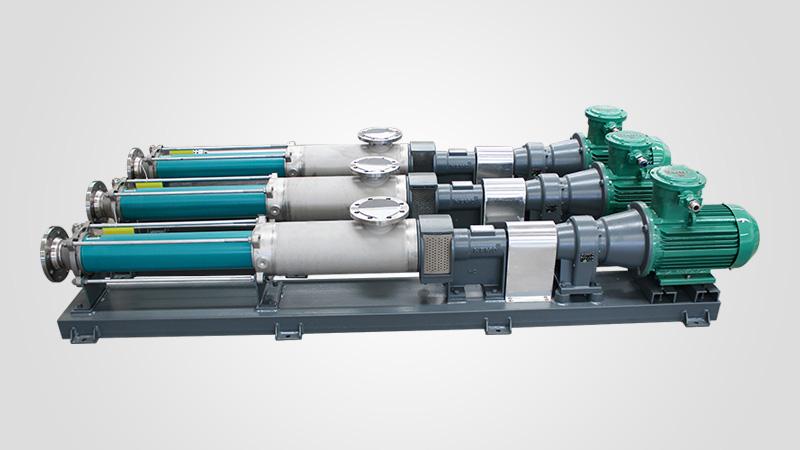
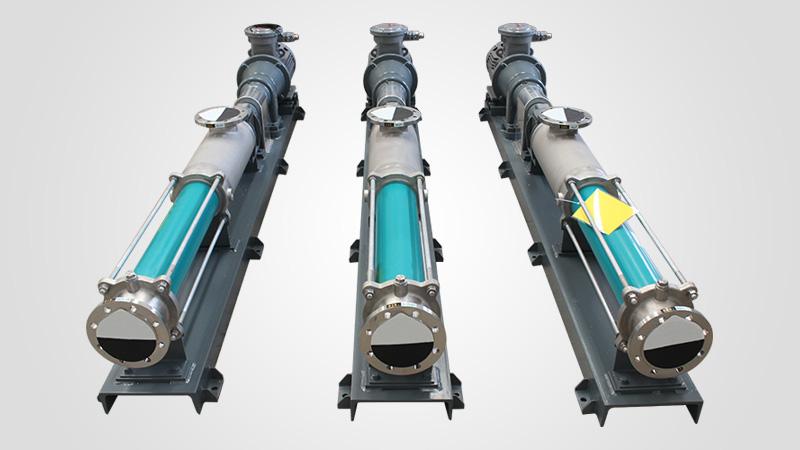
Види установки гвинтових насосів
Як вже говорилося в цій статті, вертикальні шнекові бочкові насоси є одним з видів гвинтових насосів і за конструкцією та принципом дії схожі з горизонтальними, але мають досить обмежену область застосування.
Стандартний шнековий насос встановлюється на горизонтальну поверхню та кріпиться на ній за рахунок спеціальних опор. Бочковий монтується в ємність вертикально. Тим не менш, зустрічаються нестандартні варіанти установки: вертикальна у звичайного гвинтового насоса та горизонтальна у бочкового шнекового. Заміна горизонтальної установки гвинтового насоса на вертикальне розташування, як правило, буває обумовлена бажанням споживача заощадити виробничий простір або у випадках, коли встановити насос горизонтально просто немає можливості. Це ще раз підтверджує варіативність цього виду насосів.
Геометрія роторних пар
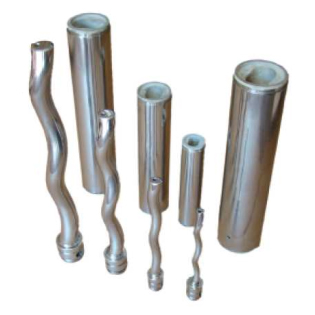
Advantages
- Насос об’ємного типу і кожен оберт ротора дорівнює певному об’єму середовища, що перекачується, тому є можливість точного регулювання продуктивності.
- Насос є самовсмоктуючим.
- Так як деталі, що обертаються, безпосередньо з’єднані один з одним, а об’ємні порожнини між статором і ротором герметичні, насос володіє високим коефіцієнтом корисної дії.
- Насос може використовуватися як у горизонтальному, так і у вертикальному положенні.
- Насос може перекачувати рідини в різних напрямках, оскільки має функцію реверсу.
- Здатні перекачувати нев’язкі, в’язкі, високов’язкі і навіть неньютонівські рідини.
- Продукт, що перекачується, не піддається ні ударному, ні здавлюючому впливу, внаслідок чого не руйнується його структура (режим течії близький до ламінарного).
- Можливі різні конструктивні виконання насоса виходячи із завдання споживача.
- Можливість отримання високої продуктивності та стійкого тиску нагнітання при різній кількості обертів ротора.
- Можливість перекачування рідин насичених газами, оскільки насос не чутливий до кавітації та гідравлічних ударів.
- Безшумна робота механічної частини. Під час роботи насоса чути шум лише від приводу насоса.
- Низьке енергоспоживання при використанні електродвигуна як привод.
Застосування гвинтових насосів
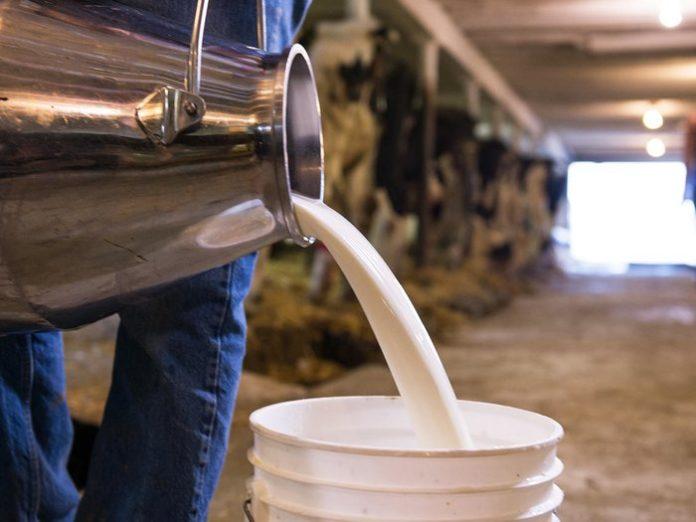
Гвинтові насоси активно застосовують у різних галузях промисловості. З огляду на специфіку продукту, що виробляється, а саме високої в’язкості і щільності, велике поширення ці насоси отримали в харчовій промисловості. Їх використовують у виноробстві (вино, ягоди винограду), у молочній промисловості (вершкове масло, йогурт, сметана, морозиво, вершки, молоко, кефір, сир, маргарин, згущене молоко), у кондитерських виробах (мед, патока, шоколад, варення, джем, желе, мус, крем), для різних соусів та приправ (гірчиця, кетчуп, томатна паста, майонез) і т.д. Їх використовують у косметичній промисловості (шампунь, рідке мило, фарби для волосся, помада, креми), нафтовій промисловості (нафта, бітумно-полімерні матеріали, дизельне паливо, мазут, бензин), у хімічній промисловості (миючі засоби, чорнило, фарби, клей, кислоти, луги), целюлозно-паперової промисловості (флокулянти, мул, фарби, паперові маси, целюлозно-водяна каша, барвники), а також в очищенні побутових та промислових стоків (флокулянти, коагулянти, мул, шлами, сапропель)



